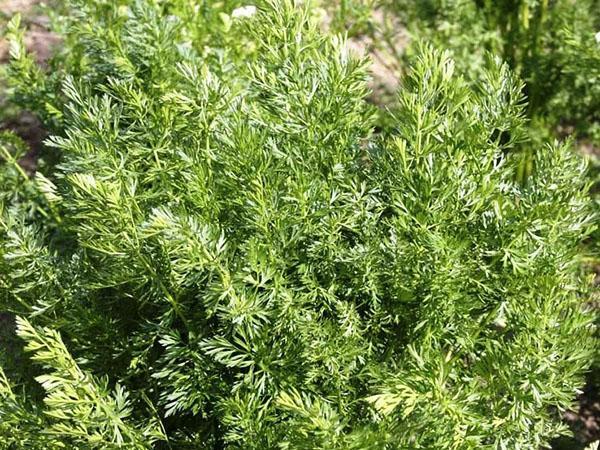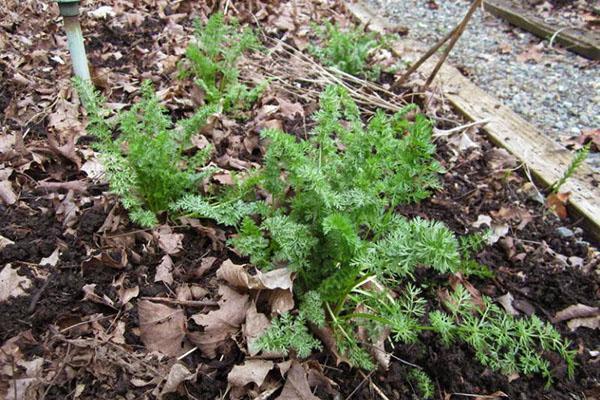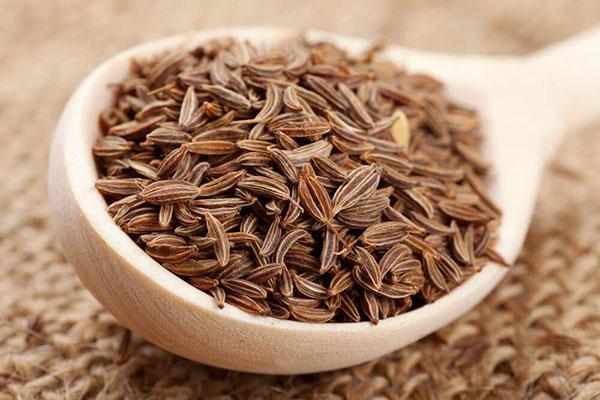Growing cumin at their summer cottage
 The cultivation of caraway seeds has been an integral part of the production of spices for many years. Caraway is a plant with a tart, pungent taste and delicate aroma. It is rich in vitamins and minerals, rich in protein and essential oils. The plant is actively used in cooking, its leaves are put in salads, added to various soups to add spice. Ground cumin is used to add flavor to bread, in the confectionery and alcoholic beverage industry. This plant is also used for the manufacture of sausages, it serves as an additive in various sauces. Adding caraway seeds to heavy and fatty meals will reduce the stress on the stomach and promote their speedy digestion.
The cultivation of caraway seeds has been an integral part of the production of spices for many years. Caraway is a plant with a tart, pungent taste and delicate aroma. It is rich in vitamins and minerals, rich in protein and essential oils. The plant is actively used in cooking, its leaves are put in salads, added to various soups to add spice. Ground cumin is used to add flavor to bread, in the confectionery and alcoholic beverage industry. This plant is also used for the manufacture of sausages, it serves as an additive in various sauces. Adding caraway seeds to heavy and fatty meals will reduce the stress on the stomach and promote their speedy digestion.
Cumin is actively used in medicine. It is one of the main components for the manufacture of medicines against flatulence, vitamins to improve the functioning of the stomach. Also, many women during lactation are prescribed medications containing cumin, which promote milk production. Since ancient times, in traditional medicine, cumin has been used as a medicine for spasms of the digestive organs, headaches, and chronic cholecystitis.
Caraway easily adapts to all conditions, easily tolerates winter in the soil. It is a perennial plant, but it is usually not grown for more than 2 years. In total, there are about 30 varieties of caraway, but no more than 6 are grown on the territory of Russia. The cultivation of appetizing vegetable caraway is the most common.
Processing the area for planting cumin

It is recommended to start preparing the site for the cultivation of caraway in early autumn. The list of planting measures includes digging up the soil, eliminating weeds.
It is recommended to grow caraway only after a well-fertilized culture, which was fed on time and a lot with organic matter. In this case, only mineral fertilizers are added to the future caraway bed:
- 10-15 grams of ammonium nitrate;
- 8-12 grams of superphosphate;
- 3-6 grams of potassium coli.
If there is not enough fertilizer in the ground from past crops, during digging, you can add humus or compost in a ratio of 3-4 kg / m.
Sowing cumin
 It is advisable to grow caraway seeds in loamy soil that is well fertilized with manure. The most valuable are seeds, they contain about 5-7% of aromatic essential oil.
It is advisable to grow caraway seeds in loamy soil that is well fertilized with manure. The most valuable are seeds, they contain about 5-7% of aromatic essential oil.
Before sowing, the previously prepared bed must be watered abundantly. Then take the following actions:
- On the surface of the earth, several transverse grooves of small depth are made, about 3-3-5 cm, observing the width between the rows of 30-35 cm.
- Caraway seeds are placed in the dug grooves at intervals of 4-6 cm.
- Then the crops are covered with a rake.
- The top of the bed is abundant mulch peat.
In such favorable conditions, the first ascending sprouts of cumin appear in 13-17 days.Planting and caring for caraway seeds are significantly different from caring for other representatives of this species.
Caraway Seed Care
 The initial pre-emergence care of caraway crops is to remove the crust with a hoe. As soon as the first shoots have appeared, carry out a puff and weeding in the rows. Further, it is customary to process the crops with tractor cultivators. In the first year of its growth, cumin weaves small rosettes of leaves, almost without shading the soil, weeds appear intensively in the rows, and after the rains the earth becomes very compacted.
The initial pre-emergence care of caraway crops is to remove the crust with a hoe. As soon as the first shoots have appeared, carry out a puff and weeding in the rows. Further, it is customary to process the crops with tractor cultivators. In the first year of its growth, cumin weaves small rosettes of leaves, almost without shading the soil, weeds appear intensively in the rows, and after the rains the earth becomes very compacted.
 Despite this, during the active growing season, the seedlings are treated with cultivators for the tractor no less than 5-6 times over the entire period. If the sowing was carried out in the summer, the need for inter-row cultivation is significantly reduced - during the growing season, 2-3 loosening is enough. With dense types of sowing, during the appearance of 2-3 leaves, a breakthrough is carried out and the shoots are separated at a distance of 9-13 cm from each other.
Despite this, during the active growing season, the seedlings are treated with cultivators for the tractor no less than 5-6 times over the entire period. If the sowing was carried out in the summer, the need for inter-row cultivation is significantly reduced - during the growing season, 2-3 loosening is enough. With dense types of sowing, during the appearance of 2-3 leaves, a breakthrough is carried out and the shoots are separated at a distance of 9-13 cm from each other.
When cumin is planted in open ground without fertilization and other similar actions, the plant grows small and is highly susceptible to diseases and pests.
During the first year of active growth of cumin, you need to feed the plant 2-3 times:
- the first feeding consists of mineral fertilizer, it would be a good option to add it during a breakthrough;
- the second feeding is done in late autumn with fertilizer with phosphorus and potassium;
- the third feeding is carried out at any time if necessary.
For maximum efficiency, the fertilizer is placed at a depth of 8-10 cm between rows. The first spring loosening of the soil is combined with spring fertilization.
 The first harvests begin when 50-60% of the seeds are brown. Tie the cut cumin immediately into small sheaves and place in a row to dry. The dried sheaves are quickly ground.
The first harvests begin when 50-60% of the seeds are brown. Tie the cut cumin immediately into small sheaves and place in a row to dry. The dried sheaves are quickly ground.
Also, the collection of caraway seeds can be done with the help of a combine, but only on condition that the planted varieties do not crumble during collection. As a rule, I start this type of collection a little later, namely when most of the seeds turn brown. You should also know that caraway seeds ripen extremely quickly - in 2-3 days. If you are late with harvesting, it will lead to the loss of a large part of the crop.
When storing cumin, the humidity in the room should not exceed 9-12%, otherwise it will quickly deteriorate.
Plant pest and disease control
 The most common caraway disease is powdery mildew, which can overtake the plant in a damp climate with large changes in air temperature. Powdery mildew makes itself felt with a white, loose bloom, located on the stem and leaves of the plant. Another caraway disease that is less common is black rot. Black rot is a fungal infection. In addition to black rot, there are a number of plant diseases, some of which are phomosis and spotting.
The most common caraway disease is powdery mildew, which can overtake the plant in a damp climate with large changes in air temperature. Powdery mildew makes itself felt with a white, loose bloom, located on the stem and leaves of the plant. Another caraway disease that is less common is black rot. Black rot is a fungal infection. In addition to black rot, there are a number of plant diseases, some of which are phomosis and spotting.
So that these diseases do not overtake it when growing caraway, as a preventive measure you need:
- carry out regular disinfection of seeds;
- control crop rotation;
- weed regularly and remove plant residues.
If the disease has not yet been started, solutions of fungicides containing copper will help in the fight against it.
Insects are also not indifferent to caraway seeds. Of the inveterate enemies of cumin are known:
- larvae of all click beetles;
- striped graphosoma;

- Italian bug;
- black tick;
- carrot moth.

To combat the above pests, spraying with garlic broth, infusion of potato root vegetable leaves and bitter wormwood are used. You can also use a soap solution to which you can add red ground pepper. These ingredients in combination will help mask the caraway scent that insects love. Agrochemicals are recommended to be applied only to caraway seeds grown for seeds. If cumin is grown for use in leaf food, then the use of agrochemicals is strictly not recommended.